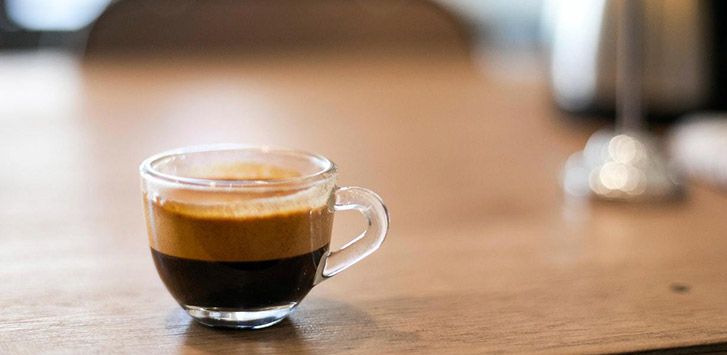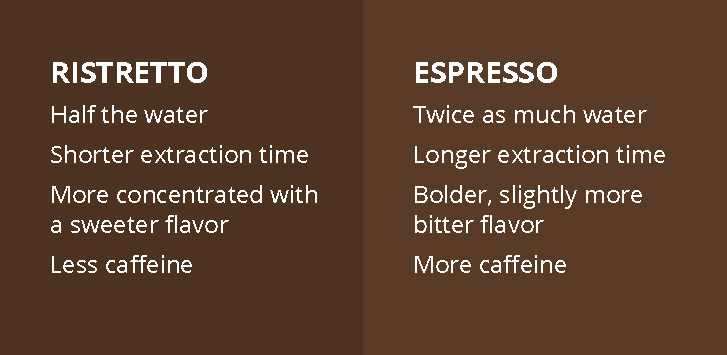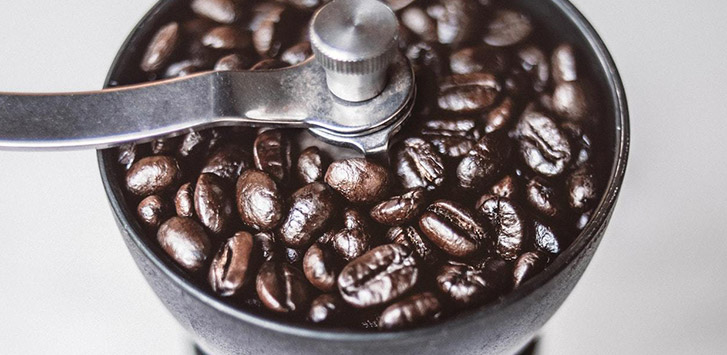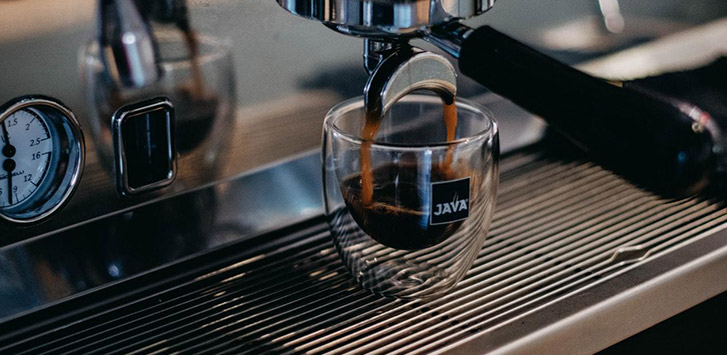
If you’ve had your fill of pouring espresso shots and similar derivative drinks, why not give a ristretto a shot (pun intended). Nearly identical to brewing espresso with some slight tweaking, the ristretto is a less bitter, but more flavorful drink that will become a fast favorite for our espresso-fiends out there.
So, What is a Ristretto Exactly?
The humble ristretto loosely translates to “narrow” or more accurately “restricted” in Italian. This drink itself began its rise in popularity in the 1980s (at least within the US) solely due to David Schomer’s efforts. As the owner and operator of Seattle’s Espresso Vivace, Chomer nearly single-handedly proselytized espresso brewing and espresso art within the US.
Ristretto is nearly identical to its big brother the espresso but differs in small, but significant ways. The most notable of which is the use of less water and a shortened extraction time compared to espresso. Because of the shorter extraction time, ristretto has a thicker body and more crema.
The Differences Between Ristretto & Espresso
The differences between ristretto and espresso are subtle but have a significant impact on the final product. Below we quickly break down the differences between the two for you.

Coffee Bean, Roasting, & Grind Size Considerations
As with all our spotlights on different brewing methods and coffee drinks, we’d be remiss if we didn’t offer you our suggestions and tips for what coffee beans to use, what roasting level works best with this brewing method, as well as any grind considerations to make an excellent ristretto.

Like with any espresso-based drink; whether that’s a macchiato or a lungo, most espresso-derived drinks usually do well using Sumatrans, Brazilian, and even Nicaraguan coffee beans. Though you shouldn’t be strictly limited to those three. Central American and other Indonesian single-origin coffee beans will work just as well for brewing a ristretto. The other route you could go in is to use a specific espresso blend, like our in-house Ferdelance espresso blend, or make your own coffee blend to use.
Unsurprisingly, ristretto’s tend to prefer medium-dark to dark roasts given nearly identical profile to espresso. Both roast levels tend to bring out the best of whatever bean you are using, and the brewing method used for espresso only elevates the brightness, aroma, body, and flavor characteristics of the bean you chose to use.
The final thing you should be cognizant of when brewing a ristretto is the grind size. Similar to an espresso, ristrettos use finely ground coffee beans given the brewing method of using pressurized hot water pushing through the coffee ground. Be careful to not grind them too finely, as you’ll end with over-extracted, bitter coffee and that’s never a good thing.
How to Make a Ristretto

Much like pouring an espresso shot, crafting a ristretto shot is a similar process with a few slight tweaks.
Firstly, use around 7 grams of your preferred single-origin bean, espresso blend, or personal coffee blend.
Using less water than traditional espresso, ristretto should use around 1 ½ oz of purified water. Additionally, the extraction time for espresso is between 25-30 seconds, whereas the ristretto uses only 12-14 seconds of extraction. Be sure to use the stopwatch on your phone to help you nail this part.
And finally, unlike espresso and its derived cousins, do not dilute the ristretto with steamed milk or water. The additional volume of crema, resulting in a thicker brew should suffice.
Conclusion
If you’re already an espresso lover, the ristretto is a nice change pace that requires some minor tweaking to the pouring an espresso shot. This makes the ristretto a great addition to your coffee brewing skill set if you’ve become bored with espressos or other similar drinks. This sweeter, more caffeinated cup is simple to make, requires even less time than espresso, and is full of flavor. Happy brewing!